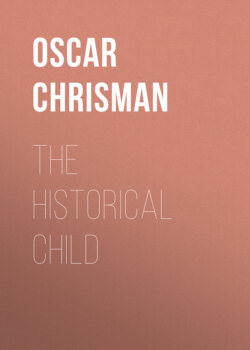Читать книгу The Historical Child - Oscar Chrisman - Страница 10
На сайте Литреса книга снята с продажи.
Dress.
ОглавлениеTable of Contents
The men wore a long broad girdle or sash with the ends hanging down before and behind, which sash often was figured and the ends fringed or tasseled. They also wore a cloak or mantle, which was thrown over the shoulders and tied around the neck. The women wore a short tunic, usually without sleeves, and with it a short skirt under which they would wear another skirt of longer length, these skirts often being embroidered and ornamented. Over tunic and skirt they would wear a long loose robe, which might have at its upper part a hood attached, for wearing over the head. The material first used for clothing was of skins and later of maguey and cotton. Mantles of fur and of feather-work were also worn in cooler weather by both men and women. They wore sandals made of deer and other skins and also of nequen and cotton.
The ordinary way of wearing the hair was to cut it short on the forehead and temples and let it grow at the back. Unmarried girls wore their hair loose, while the virgins who served in the temple had their hair cut short. In some parts the heads of the children were shaved, with a tuft left behind. Women after marriage on becoming mothers would sometimes let their hair grow on all parts and arrange it on the head; one way was to plait it and cross it on the forehead, another way was to braid it and ornament it with flowers. Also, sometimes the women would use a dye made of herbs on their hair, which gave it a violet shade.
The women used paint on their faces, one fashion was to paint the face yellow and with a pottery stamp impress a pattern of red upon the cheeks. They painted the teeth with cochineal and also they painted the hands, neck, and breast. Among some peoples the women had their arms and breasts tattooed, incisions being made with a sharp instrument and a blue color inserted. Ornaments were worn by the men, women, and children, and by all classes of people. The higher classes used gold and gems, while people of the lower classes used shell and obsidian. There were a great variety of ornaments made for the arms and neck and attached to garments. Rings were worn on the fingers and rings and plugs in the ears. There also were rings and plugs for the nose and plugs for the lips, although it would appear that these were not so much in use as were the other ornaments. "There existed very stringent laws regarding the class of ornaments which the different classes of people were allowed to wear, and it was prohibited, on pain of death, for a subject to use the same dress or ornaments as the king."5
